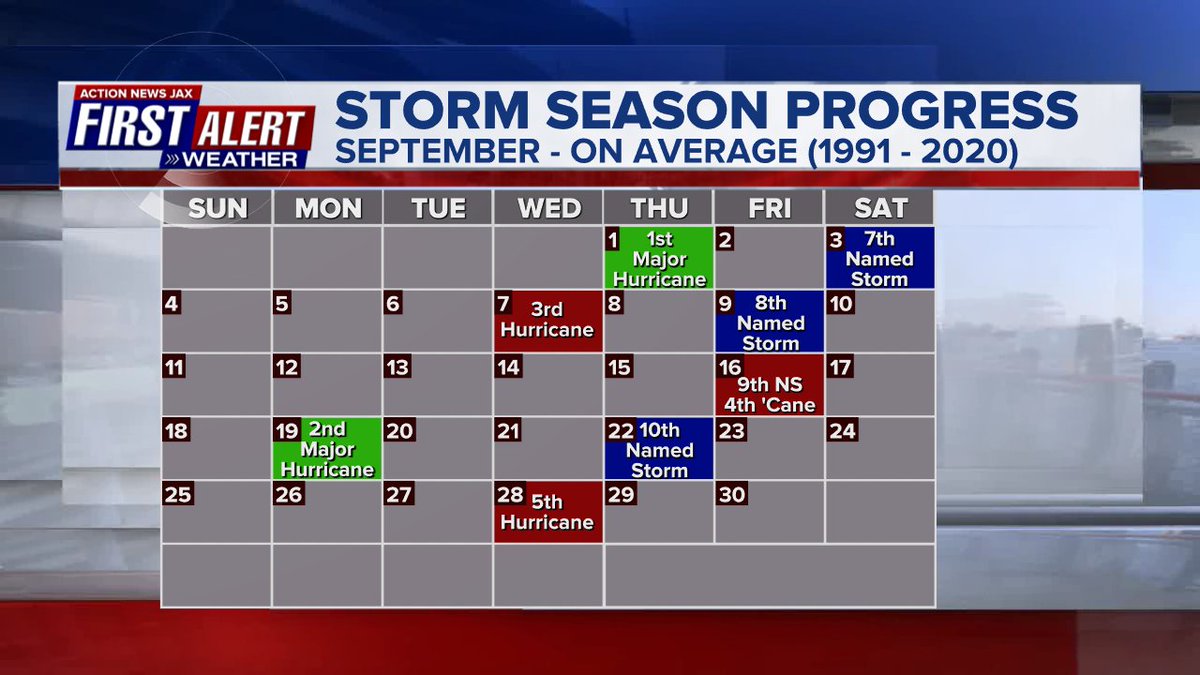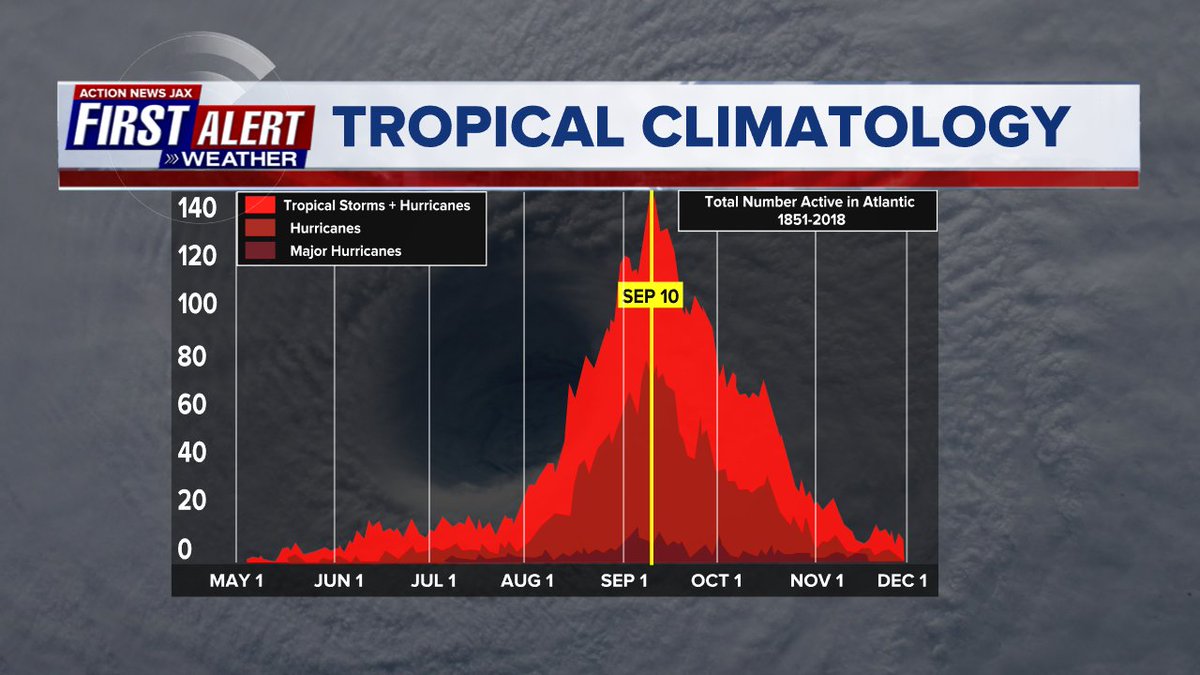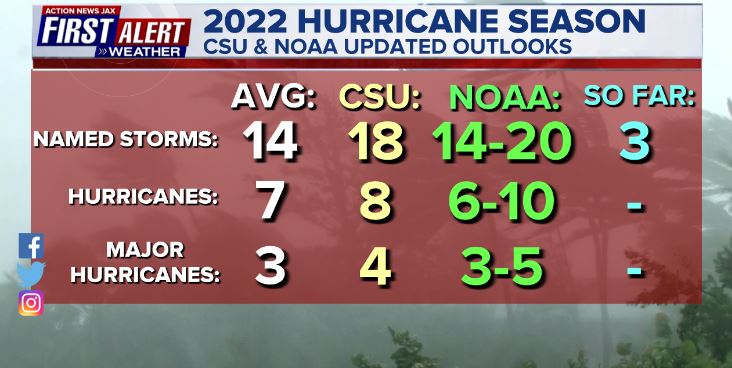Jacksonville, Fl. — The “Buresh Bottom Line”: Always be prepared!.....First Alert Hurricane Survival Guide... City of Jacksonville Preparedness Guide... Georgia Hurricane Guide.
STAY INFORMED: Get the * FREE * First Alert Weather app
FREE NEWS UPDATES, ALERTS: Action News Jax app for Apple | For Android
WATCH “Preparing for the Storm”
WATCH “The Ins & Outs of Hurricane Season”
READ the First Alert Hurricane Center “Survival Guide”
LISTEN & WATCH “Surviving the Storm” - WOKV Radio & Action News Jax
***** ALWAYS CHECK & RE-CHECK THE LATEST FORECAST & UPDATES! *****
REMEMBER WHEN A TROPICAL STORM OR HURRICANE IS APPROACHING: Taping windows is *NOT* helpful & will not keep glass from breaking.
Realize the forecast cone (”cone of uncertainty”) is the average forecast error over a given time - out to 5 days - & *does not* indicate the width of the storm &/or damage that might occur.
** No tropical systems will directly impact Jacksonville/NE Fl./SE Ga. through the weekend.... **
Atlantic Basin:
There are several tropical waves over the E. & Central Atlantic to track with the primary system being Fiona east of the Caribbean moving west/northwest.
This lead wave - ‘96-L’ - has been consistently producing showers & t’storms that has shown some organization over the last day or so. The NHC upgraded 96-L to tropical depression #7 Wed. morning then to tropical storm “Fiona” Wed. evening. Fiona has been battling a narrow but significant - 30-40 mph - band of shear to its immediate west & northwest which is causing much of the shower & t’storms activity to stay over the eastern portions of the circulation but intense thunderstorms were persistent through the day Wed. allowing for intensification. Forecast models generally show some development but maintain a relatively weak system (tropical storm) upon approach to the Northeast Caribbean by Fri. into Saturday. The westerly shear + somewhat dry air nearby is most likely why models show only modest development. Heavy rain & gusty winds can be expected for Puerto Rico, the Virgin Islands, Hispaniola & nearby islands by Fri. into the weekend.
From there, forecast models are trending northward next week with Fiona. The European model is faster & more east & northeast largely due to a stronger, therefore, deeper system vs. the slower, weaker GFS model which takes Fiona through the Bahamas & east of Fl. late next week into the following weekend. Both models do show some interaction with the land masses of Puerto Rico & Hispaniola. If true, the interaction could weaken the system... at least for a while. But once away from the Greater Antilles/Leeward Islands, it would appear overall conditions (water temps., shear & moisture) would favor strengthening. It’s this part of the forecast - next week over the Western Atlantic - that is potentially the most problematic. The GFS model is more west which would imply a threat to the U.S. east coast while the European is more east over mostly open water with only an increase in surf for the eastern seaboard.
So to recap: Fiona is a storm to watch that will have at least some impact on the Northern Leeward & Windward Islands of the Caribbean through the weekend... then eventually *perhaps* an impact to some of the Bahamas next week. It’s still early on a system that is not real well developed.
Elsewhere... there are a couple of tropical waves - (1) over the tropical Atlantic at a low latitude & (2) coming off the coast of Africa & moving westward with some potential for slow development.
Some weak low pressure may also develop this weekend/early next week over the Western Atlantic in response to an upper level trough. This low would move E/NE over the ocean away from the U.S. as it would appear right now.






Water vapor loop shows some dry air near wave ‘96-L’, but it’s more moist than past days:






September origins:
Averages below based on climatology for the Atlantic Basin through September. This season so far is well below avg.:

Wind shear:



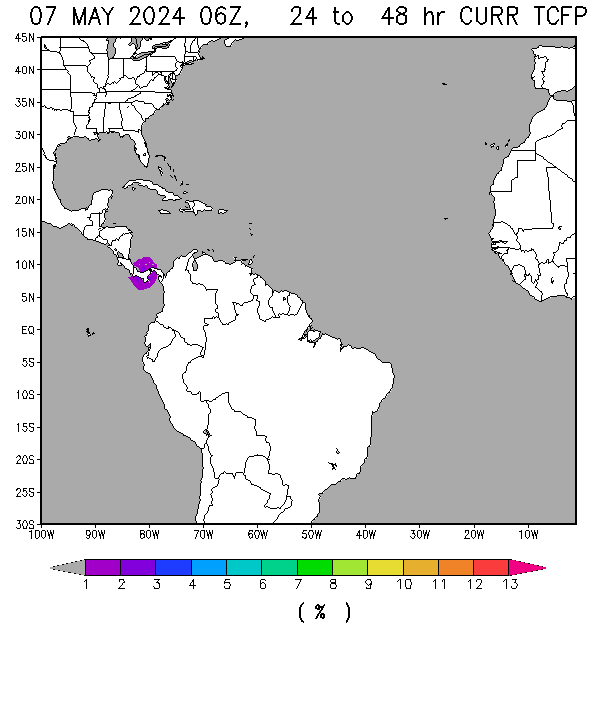
Saharan dust spreads west each year from Africa by the prevailing winds (from east to west over the Atlantic). Dry air - yellow/orange/red/pink. Widespread dust is indicative of dry air that can impede the development of tropical cyclones. However, sometimes “wanna’ be” waves will just wait until they get to the other side of - or away from - the plume then try to develop if other conditions are favorable. In my personal opinion, way too much is made about the presence of Saharan dust & how it relates to tropical cyclones. In any case, we’ve had several large dust plumes spread west to the Caribbean & Gulf with the peak of Saharan dust typically in June & July.

2022 names..... “Fiona” is the next name on the Atlantic list (names are picked at random by the World Meteorological Organization... repeat every 6 years). Historic storms are retired [Florence & Michael in ’18... Dorian in ’19 & Laura, Eta & Iota in ‘20 & Ida in ‘21]). In fact, this year’s list of names is rather infamous with “Charley”, “Frances”, “Jeanne” & “Ivan” retired from the ‘04 list (all hit Fl.) & “Matthew” was retired in 2016. The WMO decided - beginning last year - that the Greek alphabet will be no longer used & instead there will be a supplemental list of names if the first list is exhausted (has only happened three times - 2005, 2020 & 2021). The naming of tropical cyclones began on a consistent basis in 1953. More on the history of naming tropical cyclones * here *.





East Atlantic:





Mid & upper level wind shear (enemy of tropical cyclones) analysis (CIMMS). The red lines indicate strong shear:
Water vapor imagery (dark blue indicates dry air):

Deep oceanic heat content over the Gulf, Caribbean & deep tropical Atlantic:
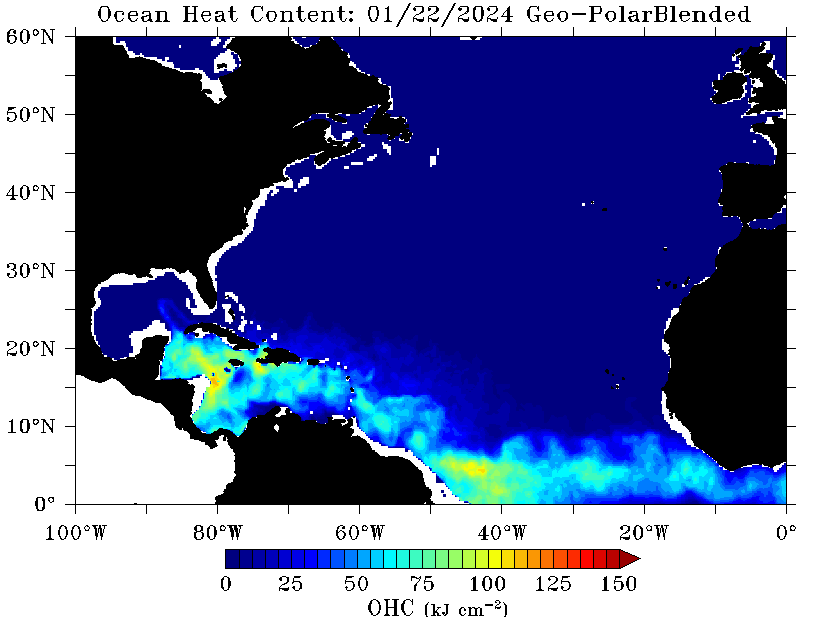
Sea surface temp. anomalies:
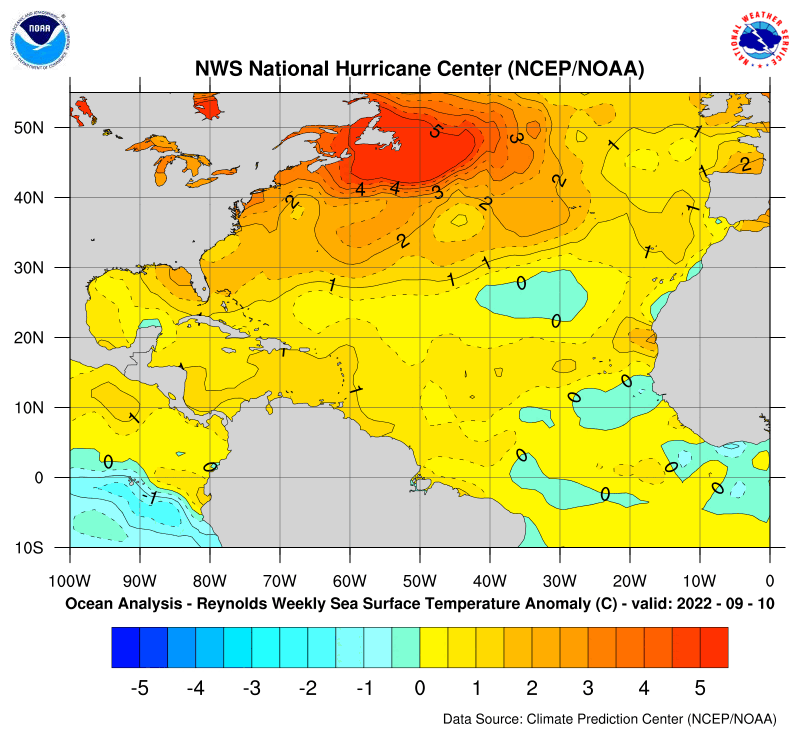

SE U.S. surface map:

Surface analysis centered on the tropical Atlantic:

Surface analysis of the Gulf:

Caribbean:

GFS wave forecast at 48 & 72 hours (2 & 3 days):
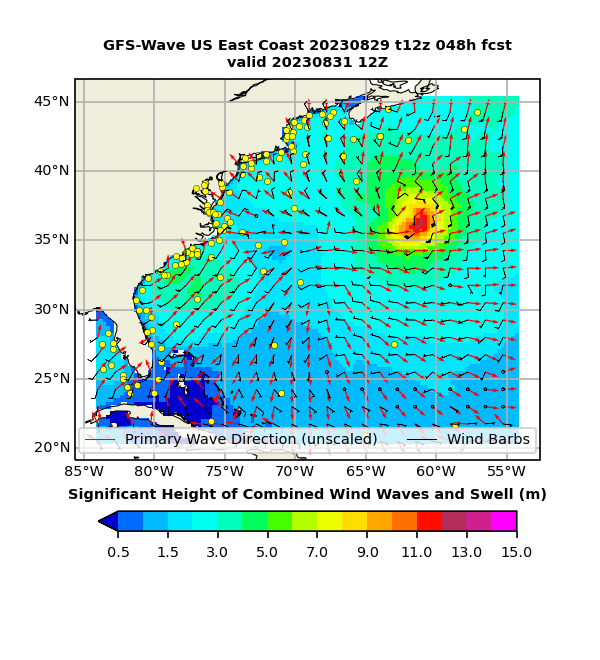

Atlantic Basin wave period forecast for 24, 48 & 72 hours respectively:




Updated Atlantic seasonal forecast from early Aug. - NOAA & CSU:
The East Pacific:



West Pacific:

Global tropical activity:

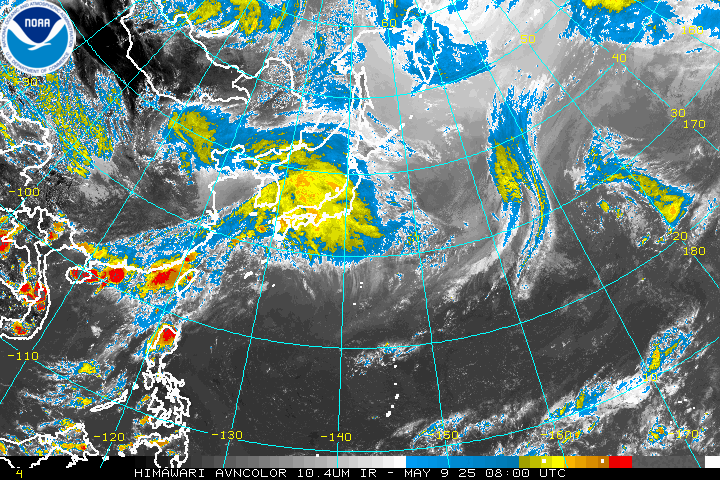
Typhoon “Muifa” over the W. Pacific has come ashore on the coast of China moving over or at least very near Shanghai while weakening but still producing strong winds & heavy rain.

“Merbok” is forecast to stay over the open water of the W. Pacific moving north/northeast well to the east of mainland Japan:

Strengthening typhoon “Nanmadol” is over the W. Pacific & is forecast to impact the Southern Japanese islands by Thu./Fri. & Southern & Western Japan (main island) over the weekend:

Cox Media Group




